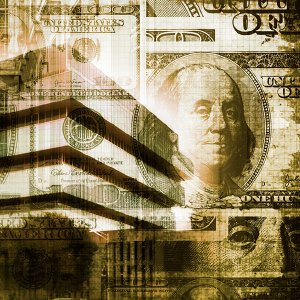U.S. States Request $2.2 TRILLION Compensation from Purdue to Address Opioid Harm

I have a few questions for you. First, how do you think you would feel if you and your family owned and ran a company that was the target of more than 2,600 lawsuits?
And what would you do if that company had initiated a public health disaster that contributed significantly to the deaths of more than 400,000 people over a couple of decades?
What the Sackler family did, the owners of Purdue Pharma, was hire a team of lawyers to endlessly negotiate with federal and state governments to escape criminal charges and minimize financial losses. Over the last year or so, the family has been guiding the company through bankruptcy proceedings to terminate these thousands of lawsuits and the liability associated with all those deaths.
Now, how would you feel about this? What if nearly every U.S. State (47 of them) had filed claims against your company and your family so they could be compensated for costs resulting from your excessively-aggressive marketing of addictive painkillers?
And what if these States were asking for a total compensation of $2.2 trillion dollars?
Is this a fair number? Could the cost of cleaning up the catastrophic opioid addiction really be that high?
We’re going to look at some facts and figures that will shed some light on the question of the propriety of that number.
Purdue Pharma’s Bankruptcy
At last report, Purdue Pharma’s bankruptcy has been proceeding through a court in White Plains, New York. The company still has billions in assets and the Sackler family has billions more in their personal accounts. According to some reports, they moved more than a billion to overseas accounts as their legal entanglements grew.
While the total demands from the States has reached $2.2 trillion, the family and their lawyers are trying to settle for about $5 billion. Note that a December 2020 article by Forbes estimated their personal fortunes at $10.8 billion.
Whether or not all these billions will be available to settle the claims listed in these thousands of lawsuits is still in question.
But another question is this: How could any company cause so much devastation that they could legitimately be on the hook for more than $2 trillion? Is it humanly possible that one company could have wrought so much destruction?
The answer is contained in this question: How much would it cost to rehabilitate every person who had first become addicted to opioid painkillers as a direct or indirect result of Purdue Pharma’s unconscionable and fraudulent marketing?
And there’s a second part to this question: How much should families be compensated after they lose a loved one to an overdose that traces back to these marketing methods?
Let’s Look to Oklahoma for Clarification
Why Oklahoma? As part of a successful lawsuit against drugmaker Johnson & Johnson, the state prepared a complete analysis of what it would cost to eliminate the opioid addiction problem in the state.
The state hired Dr. Christopher Ruhm to compile a list of all the actions required to abate the opioid crisis in the state and the costs associated with each.
Who is Christopher Ruhm? He is a Professor of Public Policy and Economics at the University of Virginia. At one time, he served on President Clinton’s Council of Economic Advisers as a Senior Staff Economist.
What Dr. Ruhm’s Abatement Plan Addresses
For years, Oklahoma suffered from a severe problem with prescription painkiller addiction. At the peak of this problem in 2009, the state lost nearly 600 citizens. In November 2011, a federal study reported that Oklahoma had the worst prescription drug abuse problem in the country. One in 12 Oklahomans (ages 12 and older) was abusing these drugs.
By 2014, nearly 10 million prescriptions for addictive painkillers were dispensed just in Oklahoma. That’s enough to give every person in the state 50 pills.
They joined states like West Virginia, Maryland, New Hampshire, Ohio, Massachusetts, Connecticut, Tennessee, Rhode Island and Kentucky in having high rates of prescription opioid addiction and overdose deaths according to 2018 statistics from the Centers for Disease Control and Prevention.
What Actions are Needed to Eliminate the Problem in This One State?
Dr. Ruhm did a masterful job of assessing all the points that would need to be addressed if this devastating problem were to be eliminated. He partially based his plan on the President’s Commission Report on combatting the opioid epidemic published in 2017. He also utilized a 2018 report from the Surgeon General.
This is how you eliminate a prescription drug epidemic in a state over a thirty-year period.
Treatment and Prevention
You make addiction treatment much more widely available. You organize transportation services for people to get to their meetings and appointments. You help the public dispose of their unused medications. You support drug courts that help divert people from incarceration if they stay sober. You set up prevention classes for every grade in every school from kindergarten through twelfth grade. You set up community prevention programs.
Cost per year: $729 million

Overdose Prevention and Response
You broadly distribute the opioid antidote naloxone to first responders, families and community service members. You help those who have lost loved ones by providing grief support. You distribute clean syringes to reduce the transmission of disease.
Cost per year: $23 million
Medical Education
You must, of course, train medical professionals to identify patients who are addicted and teach them how to refer these patients to treatment. You must also train dentists, doctors, medical students and others on addiction medicine.
Cost per year: $39 million
Neonatal and Children’s Services
You screen all children for neonatal abstinence syndrome, the condition suffered by babies exposed to opiates in the womb who are sick and traumatized by the withdrawal of those drugs after birth. You treat these children until they are healthy and free from the effects of prenatal drugs. You screen pregnant women for the need for this service when their babies are born.
Cost per year: $35 million
Data Surveillance
You establish services to ensure that doctors are prescribing properly and that they have access to and use a Prescription Monitoring Program database to detect any patient that might be trying to get prescriptions from more than one doctor. You monitor the incidence of neonatal abstinence syndrome. You improve the exchange of information between state agencies.
Cost per year: $32 million
Enforcement
You train your state agencies on implementing crisis interventions and maintain attorneys, analysts and compliance inspectors on staff. You also run a heroin/opioid task force.
Cost per year: $13 million
What is the total price tag?
Per year: $870 million
The most expensive category by far is treatment and prevention.
Total over 30 years: $18 billion
Another Way to Look at the Costs
If all states were the same size as Oklahoma, this cost extrapolated out across all 50 states would total just under a trillion dollars. But realize that Oklahoma is not a large state. It has a population of almost four million people. California has a population ten times that number.
Oklahoma’s cost of $18 billion over 30 years comes to $4,507 per resident per year.
Using this figure to work out the national costs for abatement of prescription drug abuse and addiction and you get this figure:
One trillion, four hundred seventy-nine billion, four hundred thirty eight million, forty-one thousand, eight hundred sixty dollars.
That’s vastly more than the money made by the Purdue family selling OxyContin. The cost of dealing with these problems has a way of multiplying when lives are lost or ruined.
Costs Not Included in This Plan
Dr. Ruhm included only the costs of eliminating the problem of prescription drug addiction. He didn’t actually include all the costs incurred by mopping up the wreckage caused by addiction.
These costs include:
- Medicare, Medicaid and other medical and hospitalization costs for those who are addicted and those who are harmed or injured by them
- Criminal justice costs including police, prisons, court proceedings, property lost due to crime
- Lost productivity due to illness, lost of life, drug dependence or incarceration
- Care for children of those who are addicted or incarcerated or who lose their lives
- Welfare, unemployment and other benefits
Every time a person becomes addicted to prescription drugs, these other costs kick in. Dr. Ruhm was not asked to include the entire financial burden of prescription drug addiction in his analysis, but just the cost of wiping it out.
So Is $2.2 Trillion a Fair Number?

What do you think? If it could cost $1.5 trillion just to remedy our prescription drug abuse and addiction problem across the country, and these other costs are part of the burden, does $2.2 trillion sound like a fair number?
It does to me.
A Last Word on These Costs
When you have worked in addiction recovery, it is easy to see how important each of the actions in Oklahoma’s plan are if we are to restore sobriety to our population.
But the numbers in their plan only relate to the prescription drug problem. The lawsuit for which this plan was prepared was directed at only one of the opioid manufacturers, Johnson & Johnson.
The plan does not calculate all these other costs of dealing with and abating addiction to alcohol or other illicit drugs. Misuse of and addiction to these substances are further draining the wallets of every America.
According to the National Institute on Drug Addiction, alcohol is costing us $249 billion each year, illicit drugs are costing $193 billion and prescription opioids $78 billion. Those are not the costs to eradicate the problems, that’s what we are actually spending as a nation because these problems exist.
That means that each person (infant, young, old, healthy, unhealthy, incarcerated or not) is paying $1,584 each year to cope with this damage.
Every time we have the opportunity to help someone achieve sobriety, as an individual, a group or a nation, we are doing the right thing to reduce this burden for ourselves, our communities and our country.
Sources:
- https://www.reuters.com/article/us-purdue-pharma-investigations-opioids/u-s-states-seek-2-2-trillion-from-oxycontin-maker-purdue-pharma-filings-idUSKCN25D2EG
- https://www.bloomberg.com/news/articles/2021-01-27/purdue-talks-said-to-stall-on-demand-for-more-cash-from-sacklers
- https://www.newyorker.com/news/news-desk/the-sackler-familys-plan-to-keep-its-billions
- https://www.washingtonpost.com/business/economy/sackler-family-transferred-136-billion-in-purdue-pharma-profits-overseas-company-says-in-court-filing/2019/12/16/b4ecb3d2-205d-11ea-86f3-3b5019d451db_story.html
- https://www.forbes.com/sites/graisondangor/2020/12/17/congress-excoriates-sacklers-over-purdue-pharmas-role-in-opioid-crisis/?sh=3bc08fea782a
- https://www.drugabuse.gov/drug-topics/opioids/opioid-summaries-by-state/oklahoma-opioid-involved-deaths-related-harms
- https://oklahoman.com/article/5558012/oklahoma-deaths-from-opioid-meth-and-heroin-increase
- https://www.drugabuse.gov/drug-topics/opioids/opioid-summaries-by-state
- https://www.ncbi.nlm.nih.gov/pmc/articles/PMC5975355/
- https://www.drugabuse.gov/drug-topics/trends-statistics/costs-substance-abuse


 ®
®